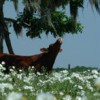 In cattle, all physiological processes in the body, including the immune system, are influenced by the cattle’s nutritional status. Therefore, the past and present nutritional status serves as an immune function modulator in cattle that can influence the performance and reproduction of beef cattle. This 6-page fact sheet was written by Matt Hersom, and published by the UF Department of Animal Sciences, June 2014.
In cattle, all physiological processes in the body, including the immune system, are influenced by the cattle’s nutritional status. Therefore, the past and present nutritional status serves as an immune function modulator in cattle that can influence the performance and reproduction of beef cattle. This 6-page fact sheet was written by Matt Hersom, and published by the UF Department of Animal Sciences, June 2014.
http://edis.ifas.ufl.edu/an292
Tag: Animal Sciences Department
Goat Parasite Control: General Guidelines
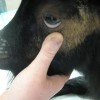 Gastrointestinal (GI) parasitism is the leading cause of death and decreased production in goats. At least 48% of farms in the southeast have parasites that are resistant to all classes of dewormers. While there is no one-size-fits-all recommendation for parasite control, the information in this fact sheet is provided for on-farm use. Contact your veterinarian for specific recommendations. Information was provided by Dr. Sarah Reuss of the UF Large Animal Medicine Service. This 2-page fact sheet was written by Sarah Reuss, and published by the UF Department of Animal Sciences, February 2014.
Gastrointestinal (GI) parasitism is the leading cause of death and decreased production in goats. At least 48% of farms in the southeast have parasites that are resistant to all classes of dewormers. While there is no one-size-fits-all recommendation for parasite control, the information in this fact sheet is provided for on-farm use. Contact your veterinarian for specific recommendations. Information was provided by Dr. Sarah Reuss of the UF Large Animal Medicine Service. This 2-page fact sheet was written by Sarah Reuss, and published by the UF Department of Animal Sciences, February 2014.
http://edis.ifas.ufl.edu/an294
Intestinal and Tracheal Parasites of Poultry
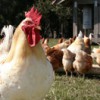 A parasite is defined as an animal or plant that derives sustenance and/or protection by living in or on another animal or plant called the host. Intestinal and tracheal parasites of poultry are commonly referred to as “worms,” although this term is technically not correct. These parasites can cause chickens in a flock to appear unthrifty, which often leads to secondary complications. In some cases, the parasites can cause mortality in the flock. Frequent inspection of the flock for signs of illness is the best management tool for identifying when these parasites are a problem. This 3-page fact sheet was written by Gary D. Butcher and Michael A. Davis, and published by the UF Department of Animal Sciences, April 2014.
A parasite is defined as an animal or plant that derives sustenance and/or protection by living in or on another animal or plant called the host. Intestinal and tracheal parasites of poultry are commonly referred to as “worms,” although this term is technically not correct. These parasites can cause chickens in a flock to appear unthrifty, which often leads to secondary complications. In some cases, the parasites can cause mortality in the flock. Frequent inspection of the flock for signs of illness is the best management tool for identifying when these parasites are a problem. This 3-page fact sheet was written by Gary D. Butcher and Michael A. Davis, and published by the UF Department of Animal Sciences, April 2014.
http://edis.ifas.ufl.edu/aa078
Does the Method of Castration Affect Calf Performance?
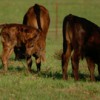 This 4-page fact sheet discusses the purpose of castration in male calves as well as the different methods used to castrate. Most methods of castration cause a certain amount of pain and stress for calves, which can affect calf performance. UF/IFAS researchers recently tested different methods of castration in calves to determine the effects of each method on calf health and performance. This publication presents these results. Written by Trey Warnock, Matt Hersom, and Todd Thrift, and published by the UF Department of Animal Sciences, December 2013.
This 4-page fact sheet discusses the purpose of castration in male calves as well as the different methods used to castrate. Most methods of castration cause a certain amount of pain and stress for calves, which can affect calf performance. UF/IFAS researchers recently tested different methods of castration in calves to determine the effects of each method on calf health and performance. This publication presents these results. Written by Trey Warnock, Matt Hersom, and Todd Thrift, and published by the UF Department of Animal Sciences, December 2013.
http://edis.ifas.ufl.edu/an291
Poultry Manure as a Fertilizer
 Animal manures have been used as natural crop fertilizers for centuries. Because of poultry manure’s high nitrogen content, it has long been recognized as one of the most desirable manures. Besides fertilizing crops, manures also supply other essential plant nutrients and serve as a soil amendment by adding organic matter, which helps improve the soil’s moisture and nutrient retention. Organic matter persistence will vary with temperature, drainage, rainfall, and other environmental factors. This 2-page fact sheet was written by Michael A. Davis, D.R. Sloan, Gerald Kidder, and R.D. Jacobs, and published by the UF Department of Animal Science, November 2013.
Animal manures have been used as natural crop fertilizers for centuries. Because of poultry manure’s high nitrogen content, it has long been recognized as one of the most desirable manures. Besides fertilizing crops, manures also supply other essential plant nutrients and serve as a soil amendment by adding organic matter, which helps improve the soil’s moisture and nutrient retention. Organic matter persistence will vary with temperature, drainage, rainfall, and other environmental factors. This 2-page fact sheet was written by Michael A. Davis, D.R. Sloan, Gerald Kidder, and R.D. Jacobs, and published by the UF Department of Animal Science, November 2013.
http://edis.ifas.ufl.edu/aa205
The Florida Bull Test 2012-2013
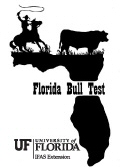 The North Florida Research and Education Center in Marianna, Florida annually hosts the Florida Bull Test. By controlling the environmental factors and taking Expected Progeny Differences (EPD’s) into account, the data clearly emphasizes the dual importance of genetics and environment in all cattle types. This 9-page fact sheet presents the procedures, rules, and results of the 2012-2013 test. Written by G. Cliff Lamb and Nicolas DiLorenzo, and published by the UF Department of Animal Sciences, October 2013.
The North Florida Research and Education Center in Marianna, Florida annually hosts the Florida Bull Test. By controlling the environmental factors and taking Expected Progeny Differences (EPD’s) into account, the data clearly emphasizes the dual importance of genetics and environment in all cattle types. This 9-page fact sheet presents the procedures, rules, and results of the 2012-2013 test. Written by G. Cliff Lamb and Nicolas DiLorenzo, and published by the UF Department of Animal Sciences, October 2013.
http://edis.ifas.ufl.edu/an290
Understanding the Effects of Forage Composition and Structure in Ruminant Nutrition (AN288)
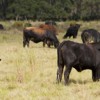 Approximately 68% of the 16 million square miles of agricultural land worldwide is used for permanent pastures for livestock production. Fortunately, ruminants can convert plant matter that is inedible or of low nutritional value for monogastrics (i.e., swine or poultry) into calorically dense products of high nutritional value. However, the process of converting poor quality plant matter into useful nutrients for ruminants is complex. This 3-page fact sheet provides an overview and understanding of how forage composition and structure affect the nutritive value and nutrient availability to ruminants. Written by Kalyn M. Waters, Nicolas DiLorenzo, and G. Cliff Lamb, and published by the UF Department of Animal Sciences, March 2013.
Approximately 68% of the 16 million square miles of agricultural land worldwide is used for permanent pastures for livestock production. Fortunately, ruminants can convert plant matter that is inedible or of low nutritional value for monogastrics (i.e., swine or poultry) into calorically dense products of high nutritional value. However, the process of converting poor quality plant matter into useful nutrients for ruminants is complex. This 3-page fact sheet provides an overview and understanding of how forage composition and structure affect the nutritive value and nutrient availability to ruminants. Written by Kalyn M. Waters, Nicolas DiLorenzo, and G. Cliff Lamb, and published by the UF Department of Animal Sciences, March 2013.
http://edis.ifas.ufl.edu/an288
Effect of Age at Castration on Beef Calf Performance (AN289)
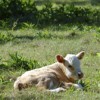 A study in Florida was conducted to examine the issue of age at castration to determine if castration timing resulted in significant differences in growth rate and weaning weight in nursing calves. In addition, the study included a comparison between Angus and Brangus calves in the treatment groups to determine if there was a breed by castration effect. No differences in calf growth rates were observed in early compared to late castration. This 4-page fact sheet was written by Amie Imler, Todd Thrift, Matt Hersom, and Joel Yelich, and published by the UF Department of Animal Sciences, March 2013.
A study in Florida was conducted to examine the issue of age at castration to determine if castration timing resulted in significant differences in growth rate and weaning weight in nursing calves. In addition, the study included a comparison between Angus and Brangus calves in the treatment groups to determine if there was a breed by castration effect. No differences in calf growth rates were observed in early compared to late castration. This 4-page fact sheet was written by Amie Imler, Todd Thrift, Matt Hersom, and Joel Yelich, and published by the UF Department of Animal Sciences, March 2013.
http://edis.ifas.ufl.edu/an289
Florida Dairy Industry Statistics: Economic Measures (AN287)
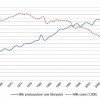 This 7-page fact sheet brings together key economic and price data about Florida’s primary dairy industry collected by the U.S. Department of Agriculture (USDA). Written by K.G. Arriola and A. De Vries, and published by the UF Department of Animal Sciences, February 2013.
This 7-page fact sheet brings together key economic and price data about Florida’s primary dairy industry collected by the U.S. Department of Agriculture (USDA). Written by K.G. Arriola and A. De Vries, and published by the UF Department of Animal Sciences, February 2013.
http://edis.ifas.ufl.edu/an287
Florida Dairy Industry Statistics: Herd Performance Measures and Benchmarks (AN286)
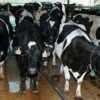 This 8-page fact sheet summarizes technical performance data of dairy herds in Florida and the Southeast United States collected through the Dairy Herd Improvement (DHI) program. Written by K.G. Arriola and A. De Vries, and published by the UF Department of Animal Sciences, February 2013.
This 8-page fact sheet summarizes technical performance data of dairy herds in Florida and the Southeast United States collected through the Dairy Herd Improvement (DHI) program. Written by K.G. Arriola and A. De Vries, and published by the UF Department of Animal Sciences, February 2013.
http://edis.ifas.ufl.edu/an286
Food Processing: The Meat We Eat (AN283)
 Meat processing technology is used to produce many of the foods we enjoy, such as hot dogs, hamburgers, and chicken nuggets. Recently, the media has focused on certain meat products, giving them names such as “pink slime” and “meat glue.” The names of these products might have many people wondering what we are eating and how the meat we eat is produced. Part of being a good consumer is learning about what you eat, from how the food is made to whether the food is safe. This publication discusses the facts about meat processing so you can make knowledgeable decisions about the meat you eat. This 5-page fact sheet was written by Erica L. Bub, Keith Schneider, Chad Carr, and Matt Hersom, and published by the UF Department of Animal Sciences, December 2012.
Meat processing technology is used to produce many of the foods we enjoy, such as hot dogs, hamburgers, and chicken nuggets. Recently, the media has focused on certain meat products, giving them names such as “pink slime” and “meat glue.” The names of these products might have many people wondering what we are eating and how the meat we eat is produced. Part of being a good consumer is learning about what you eat, from how the food is made to whether the food is safe. This publication discusses the facts about meat processing so you can make knowledgeable decisions about the meat you eat. This 5-page fact sheet was written by Erica L. Bub, Keith Schneider, Chad Carr, and Matt Hersom, and published by the UF Department of Animal Sciences, December 2012.
http://edis.ifas.ufl.edu/an283
The Florida Bull Test 2011-2012 (AN284)
 The North Florida Research and Education Center in Marianna, Florida annually hosts the Florida Bull Test. By controlling the environmental factors and taking Expected Progeny Differences (EPD’s) into account, the data clearly emphasizes the dual importance of genetics and environment in all cattle types. This 5-page fact sheet presents the procedures, rules, and results of the 2011-2012 test. Written by G. Cliff Lamb and Nicolas DiLorenzo, and published by the UF Department of Animal Sciences, December 2012.
The North Florida Research and Education Center in Marianna, Florida annually hosts the Florida Bull Test. By controlling the environmental factors and taking Expected Progeny Differences (EPD’s) into account, the data clearly emphasizes the dual importance of genetics and environment in all cattle types. This 5-page fact sheet presents the procedures, rules, and results of the 2011-2012 test. Written by G. Cliff Lamb and Nicolas DiLorenzo, and published by the UF Department of Animal Sciences, December 2012.
http://edis.ifas.ufl.edu/an284
Application of Ionophores in Cattle Diets (AN285)
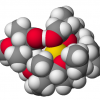 Beef cattle producers should consider using ionophores to increase calf gain and gain efficiency in a cost-effective manner. Ionophores are feed additives used in cattle diets to increase feed efficiency and body weight gain. They are compounds that alter rumen fermentation patterns. Ionophores can be fed to any class of cattle and can be used in any segment of the beef cattle industry. Similar to many other feed additives, ionophores are fed in very small amounts and supplied via another feedstuff as carrier for intake. Ionophores decrease incidence of coccidiosis, bloat, and acidosis in cattle. This 4-page fact sheet was written by Matt Hersom and Todd Thrift, and published by the UF Department of Animal Sciences, December 2012.
Beef cattle producers should consider using ionophores to increase calf gain and gain efficiency in a cost-effective manner. Ionophores are feed additives used in cattle diets to increase feed efficiency and body weight gain. They are compounds that alter rumen fermentation patterns. Ionophores can be fed to any class of cattle and can be used in any segment of the beef cattle industry. Similar to many other feed additives, ionophores are fed in very small amounts and supplied via another feedstuff as carrier for intake. Ionophores decrease incidence of coccidiosis, bloat, and acidosis in cattle. This 4-page fact sheet was written by Matt Hersom and Todd Thrift, and published by the UF Department of Animal Sciences, December 2012.
http://edis.ifas.ufl.edu/an285
Pigeon Fever in Florida's Horses (VM185)
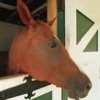 For the first time in recent history, Florida is seeing a large number of cases of pigeon fever in horses. As of June 2012, the state is reporting over 60 suspected equine cases in Okaloosa, Walton, and Marion counties. The majority of cases have been confined to the Panhandle. Pigeon fever is caused by Corynebacterium pseudotuberculosis, which is a gram-positive, rod-shaped bacteria. Horses with the most common form of pigeon fever will develop external abscesses. This 2-page fact sheet was written by Amanda M. House, and published by the UF Department of Veterinary Medicine-Large Animal Clinical Sciences, August 2012.
For the first time in recent history, Florida is seeing a large number of cases of pigeon fever in horses. As of June 2012, the state is reporting over 60 suspected equine cases in Okaloosa, Walton, and Marion counties. The majority of cases have been confined to the Panhandle. Pigeon fever is caused by Corynebacterium pseudotuberculosis, which is a gram-positive, rod-shaped bacteria. Horses with the most common form of pigeon fever will develop external abscesses. This 2-page fact sheet was written by Amanda M. House, and published by the UF Department of Veterinary Medicine-Large Animal Clinical Sciences, August 2012.
http://edis.ifas.ufl.edu/vm185
Feeding Ensiled Citrus Pulp to Finishing Pigs (AN282)
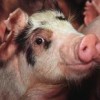 For the past six years, feed costs have continually increased and Florida has greater feed costs than the rest of the country because grain must be shipped here from where it was produced. But the Florida pork producers generally get prices above market value for their pigs because of strong demand for locally-raised foods. These Florida pork producers could become more profitable if they could significantly decrease their production costs. In Florida, pork producers have an opportunity to use citrus byproducts as a feedstuff to substantially and sustainably decrease their feed costs. This 4-page fact sheet was written by J. D. Crosswhite, N. B. Myers, A. T. Adesogan, J. H. Brendemuhl, D. D. Johnson, and C. C. Carr, and published by the UF Department of Animal Sciences, August 2012.
For the past six years, feed costs have continually increased and Florida has greater feed costs than the rest of the country because grain must be shipped here from where it was produced. But the Florida pork producers generally get prices above market value for their pigs because of strong demand for locally-raised foods. These Florida pork producers could become more profitable if they could significantly decrease their production costs. In Florida, pork producers have an opportunity to use citrus byproducts as a feedstuff to substantially and sustainably decrease their feed costs. This 4-page fact sheet was written by J. D. Crosswhite, N. B. Myers, A. T. Adesogan, J. H. Brendemuhl, D. D. Johnson, and C. C. Carr, and published by the UF Department of Animal Sciences, August 2012.
http://edis.ifas.ufl.edu/an282
Utilization of Cull Vegetables as Feedstuffs for Cattle (AN280)
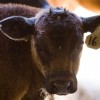 Cull vegetables can be an economical source of nutrients in beef cattle diets. They may be offered to beef cattle producers at a decreased cost or no cost. This 3-page fact sheet discusses the nutrient content and characteristics that need to be understood when utilizing cull vegetables. Written by Courtney Davis, Lindsey Wiggins, and Matt Hersom, and published by the UF Department of Animal Sciences, August 2012.
Cull vegetables can be an economical source of nutrients in beef cattle diets. They may be offered to beef cattle producers at a decreased cost or no cost. This 3-page fact sheet discusses the nutrient content and characteristics that need to be understood when utilizing cull vegetables. Written by Courtney Davis, Lindsey Wiggins, and Matt Hersom, and published by the UF Department of Animal Sciences, August 2012.
http://edis.ifas.ufl.edu/an280
Facts and Frequently Asked Questions About Lean, Finely-Textured Beef (AN281)
 Two very similar finely-textured beef products available commercially and produced from slightly different patented processes have received an increased amount of media attention recently, where they have been referred to as “pink slime.” This 4-page fact sheet is intended to answer some of the consumer questions that have arisen as a result of this increased attention. Written by Chad Carr, Dwain Johnson, Joel Brendemuhl, and Larry Eubanks, and published by the UF Department of Animal Science, July 2012.
Two very similar finely-textured beef products available commercially and produced from slightly different patented processes have received an increased amount of media attention recently, where they have been referred to as “pink slime.” This 4-page fact sheet is intended to answer some of the consumer questions that have arisen as a result of this increased attention. Written by Chad Carr, Dwain Johnson, Joel Brendemuhl, and Larry Eubanks, and published by the UF Department of Animal Science, July 2012.
http://edis.ifas.ufl.edu/an281
Ultrasound and Carcass Merit of Youth Market Cattle (AN279)
 Market cattle shown at county and state fairs and other youth shows across the United States are food animals. The endpoint value of food animals is primarily based on their carcass merit. Ideally, carcass merit should be assessed from actual carcasses. However, when carcass data cannot be collected, ultrasound evaluation of market cattle is an excellent method to accurately assess differences in fat thickness, ribeye area, and percentage of intramuscular fat within the ribeye. This 7-page fact sheet was written by Chad Carr, Dwain Johnson, and Mark Shuffitt, and published by the UF Department of Animal Science, June 2012.
Market cattle shown at county and state fairs and other youth shows across the United States are food animals. The endpoint value of food animals is primarily based on their carcass merit. Ideally, carcass merit should be assessed from actual carcasses. However, when carcass data cannot be collected, ultrasound evaluation of market cattle is an excellent method to accurately assess differences in fat thickness, ribeye area, and percentage of intramuscular fat within the ribeye. This 7-page fact sheet was written by Chad Carr, Dwain Johnson, and Mark Shuffitt, and published by the UF Department of Animal Science, June 2012.
http://edis.ifas.ufl.edu/an279
Factors that Affect Calf Selling Price at Marketing (AN278)
 There are differences between the real and perceived reasons that cattle buyers discount calves; cattle producers can control some reasons for price differentials, but they cannot control all of them. This 4-page fact sheet will review some of the attributes that affect market calf price and overall value. Written by Matt Hersom and Todd Thrift, and published by the UF Department of Animal Science, May 2012.
There are differences between the real and perceived reasons that cattle buyers discount calves; cattle producers can control some reasons for price differentials, but they cannot control all of them. This 4-page fact sheet will review some of the attributes that affect market calf price and overall value. Written by Matt Hersom and Todd Thrift, and published by the UF Department of Animal Science, May 2012.
http://edis.ifas.ufl.edu/an278
Management of Postpartum Anestrus in Beef Cows (AN277)
 It is estimated that in Florida alone the cost of infertility of beef cows exceeds $86 million annually. Infertility occurs when cows become pregnant but fail to calve, become pregnant late in the breeding season and fall out of the annual production cycle or fail to become pregnant during the breeding season. The latter two causes of infertility are a direct result of the length of the post-partum interval. This 4-page fact sheet was written by Kalyn Bischoff, Vitor Mercadante, and G. Cliff Lamb, and published by the UF Department of Animal Science, March 2012.
It is estimated that in Florida alone the cost of infertility of beef cows exceeds $86 million annually. Infertility occurs when cows become pregnant but fail to calve, become pregnant late in the breeding season and fall out of the annual production cycle or fail to become pregnant during the breeding season. The latter two causes of infertility are a direct result of the length of the post-partum interval. This 4-page fact sheet was written by Kalyn Bischoff, Vitor Mercadante, and G. Cliff Lamb, and published by the UF Department of Animal Science, March 2012.
http://edis.ifas.ufl.edu/an277